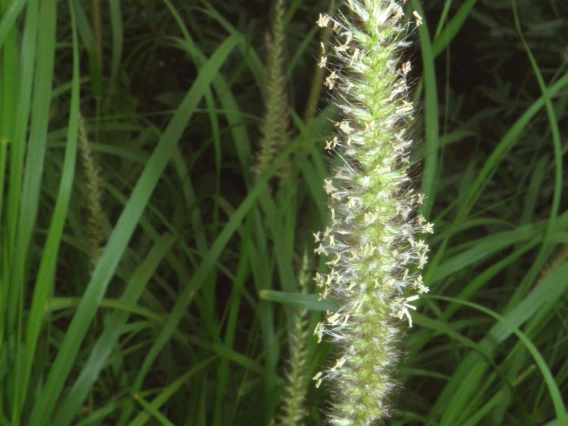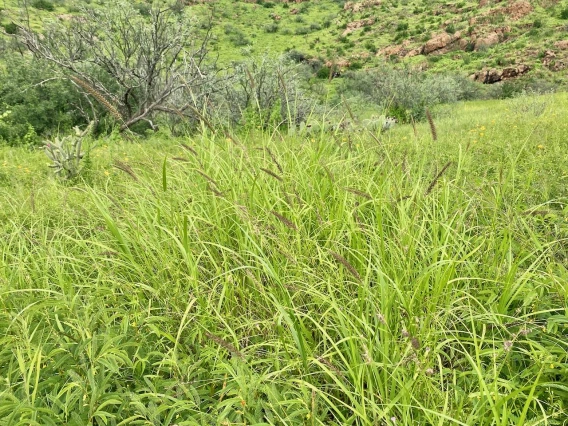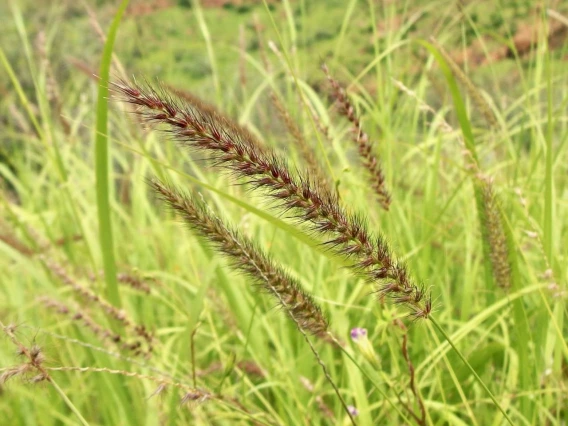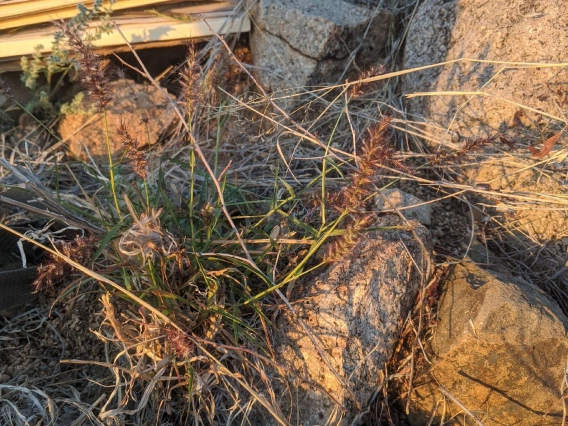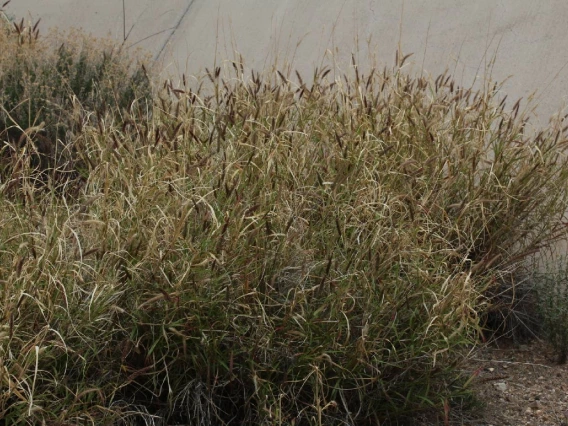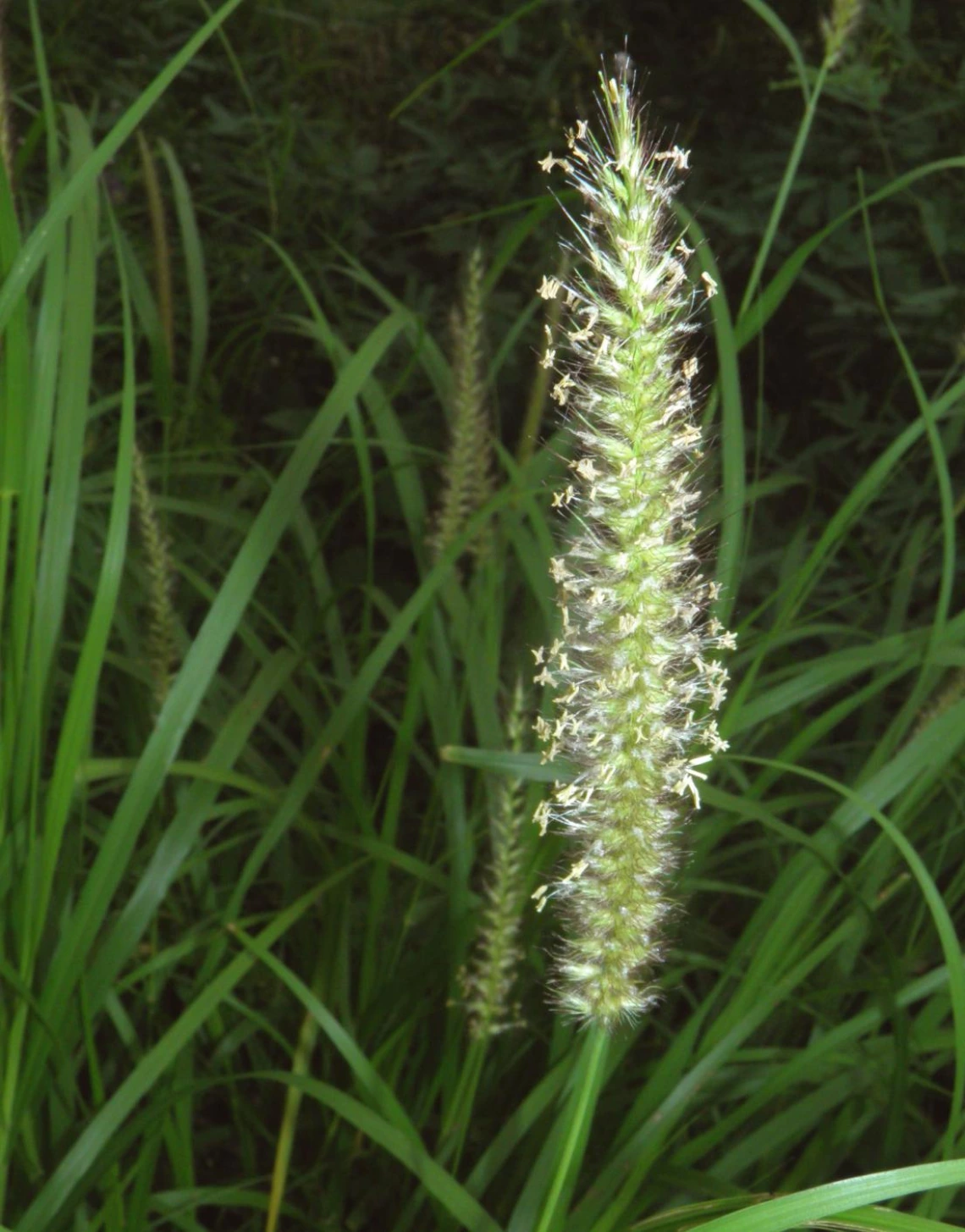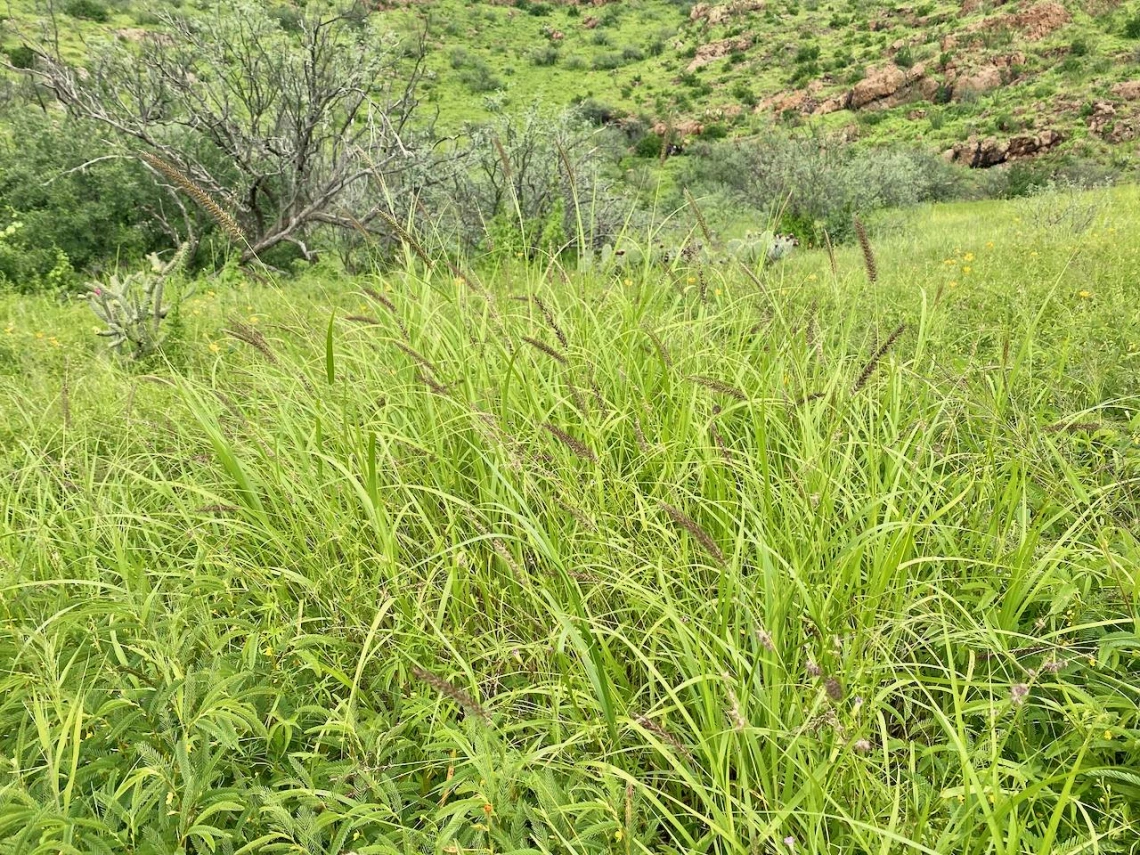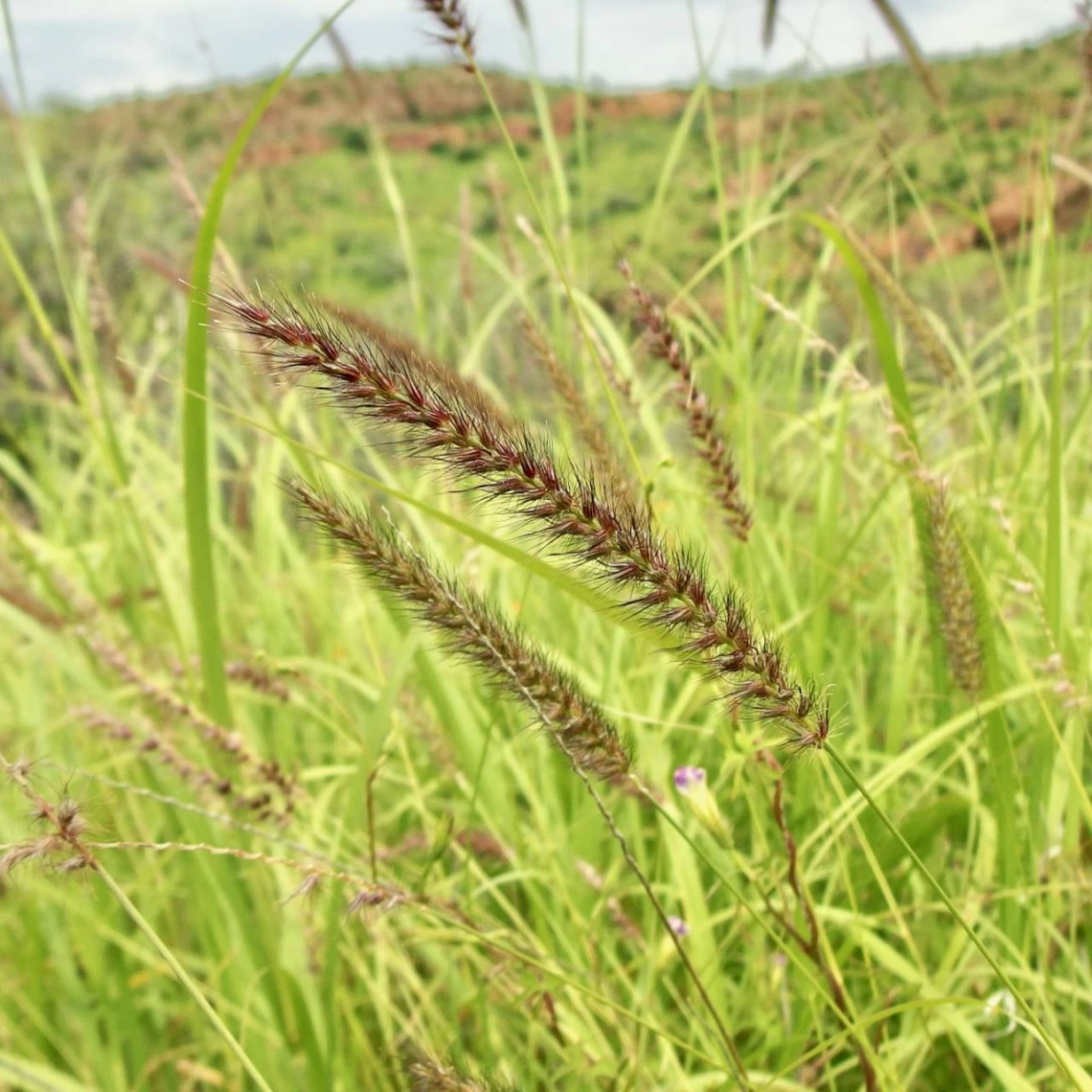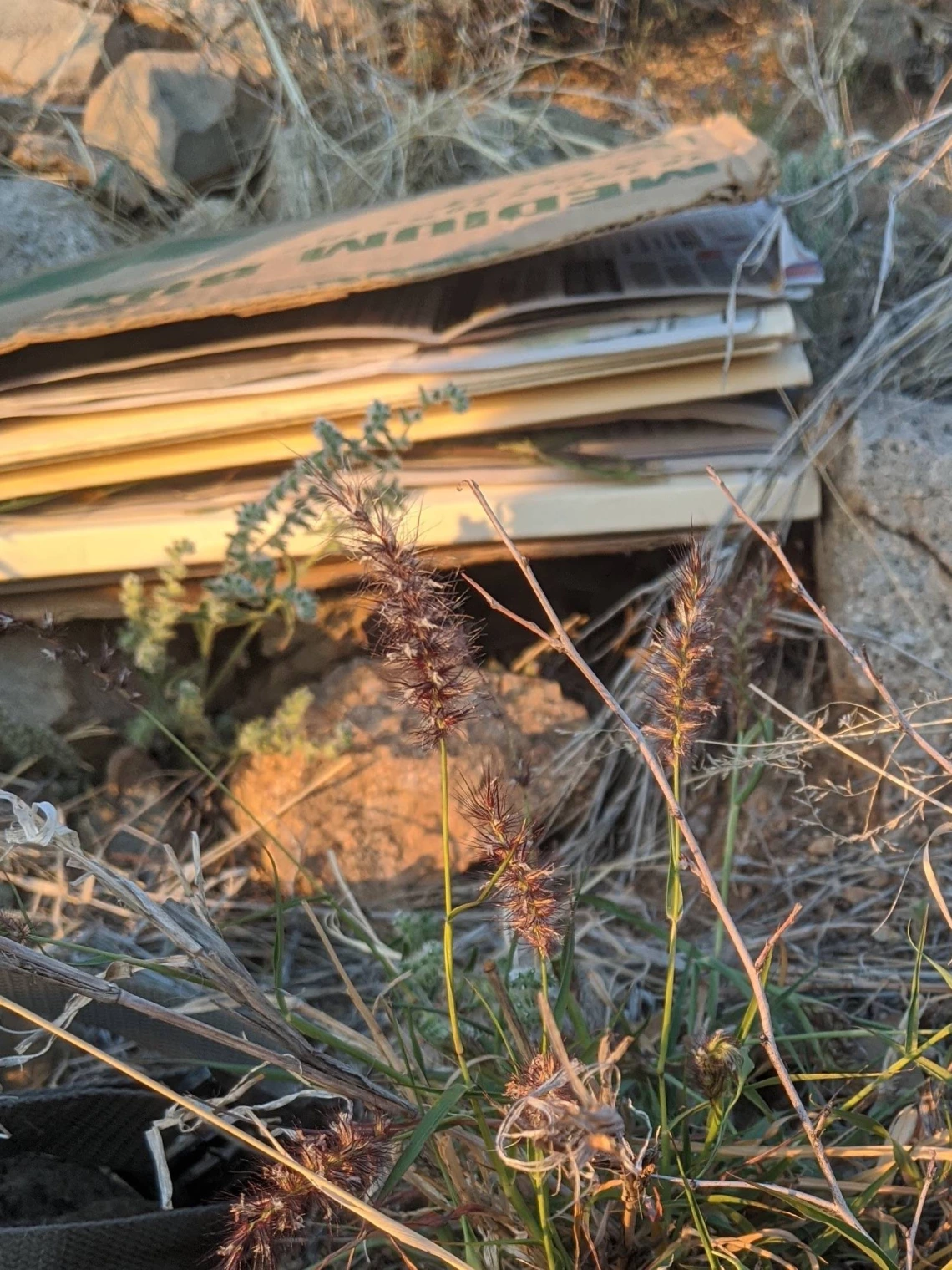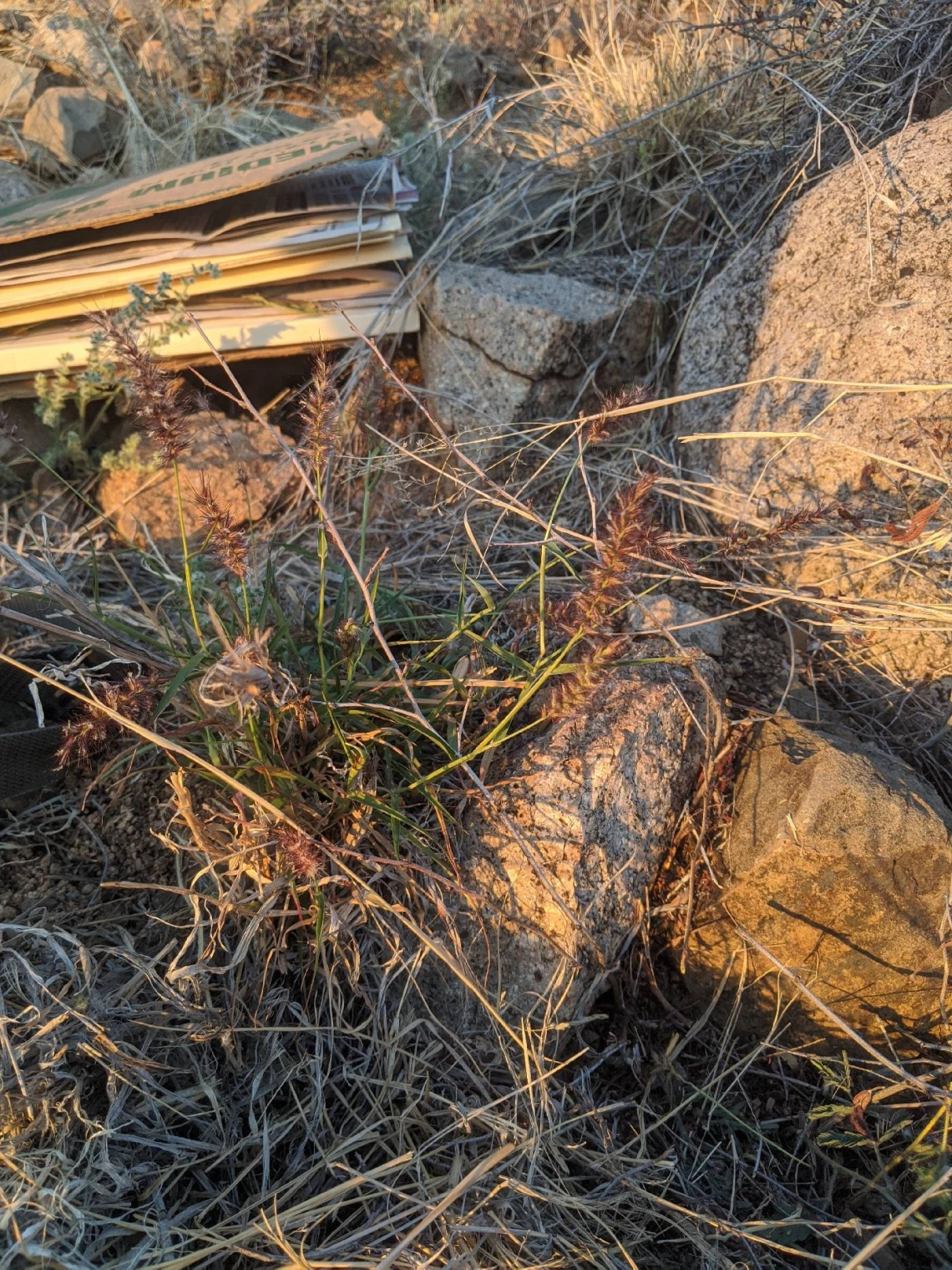Image
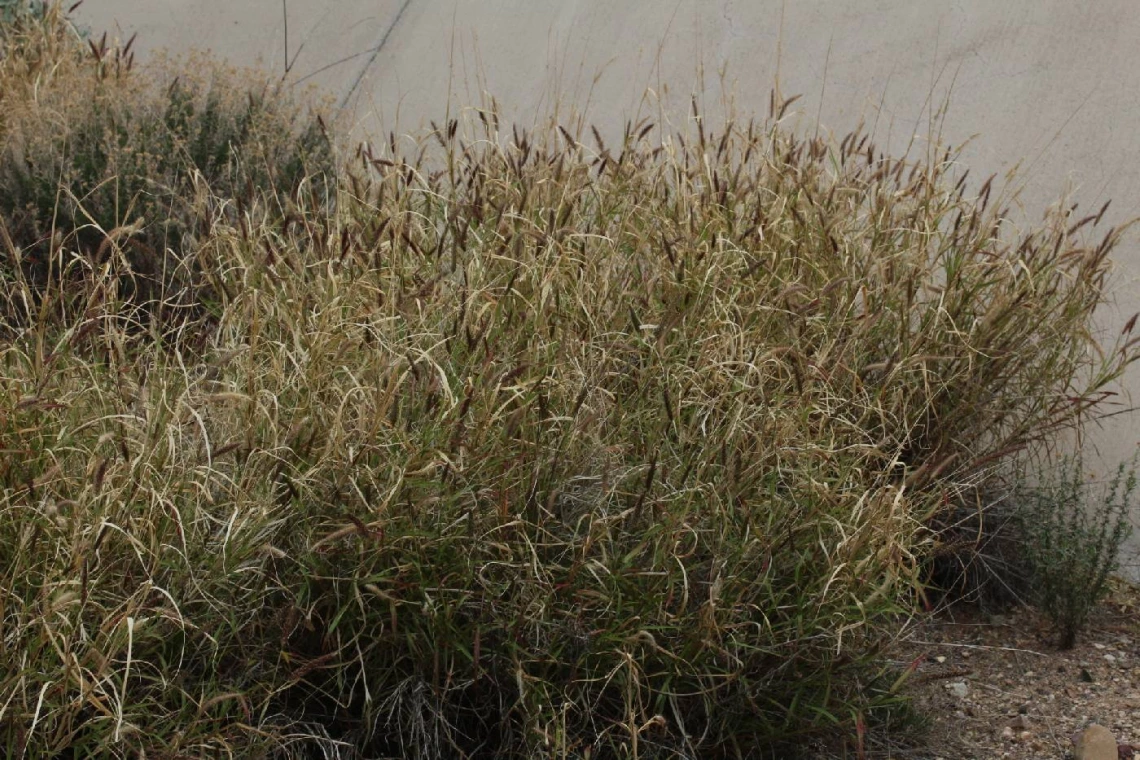
Anthony Mendoza
Common Name(s)
Buffelgrass
African foxtail grass
Pasto buffel
Zacate buffel
Scientific Name
Cenchrus ciliaris
Family
Grass family (Poaceae)
Reasons for concern
Buffelgrass is fire adapted, which means it will continue to grow successfully after fires that destroy native species and homes. This creates a harmful cycle of more frequent fires and more widespread buffelgrass. It spreads quickly and forms dense, widespread patches that outcompete native species, notably saguaros. This spread can completely change a diverse desert into a monoculture grassland.
Botanical description
Leaves
Flat, blueish green blades that are 3-11 inches long and less than a quarter inch wide. Covered in white hairs that give the leaves a rough texture.
Stem(s)
Can grow up to 5 feet tall, come from a hard base
Inflorescence
2-3 inches long cylindrical spikes of reddish brown to purple clustered spikes, each ¼-½ inch long. These spikes are covered by smaller spikes, giving them a “fuzzy” appearance. When the seeds have dispersed, the remaining stem is rough and ridged.
Roots
Grow 6-8 inches deep
Native to
South Africa
Where it grows
Buffelgrass is commonly found in disturbed areas such as vacant lots, rangelands, and agricultural areas. It grows well in rocky and sandy areas like rocky slopes and riparian environments.
Lifecycle
Perennial warm season
Reproduction
Seed dispersal
Weedy Characteristics
Buffelgrass plants can produce thousands of seeds that can remain viable for up to 5 years (sometimes more). They can travel large distances via wind, water, and adhering to animals and clothes. They grow in dense patches and spread quickly.
Look-alike Plants
Arizona Cottontop (Digitaria californica) can be distinguished by its inflourescence, which is thinner and white in color with a purple tinge. Cane bluestem (Bothriochloa barbinodis) can be distinguished by its smaller, more fan shaped white inflorescence.
Control Strategies
Manually pull up the entire plant. Pulled plants can be placed on the area they were uprooted from to inhibit the growth of seedlings. Plant fast growing natives in the pulled areas. Repeated treatment is necessary to remove any seedlings that will inevitably grow. Glyphosate can only be used if the plant is at least 50% green, which is usually during the monsoon season of late July to late September.

